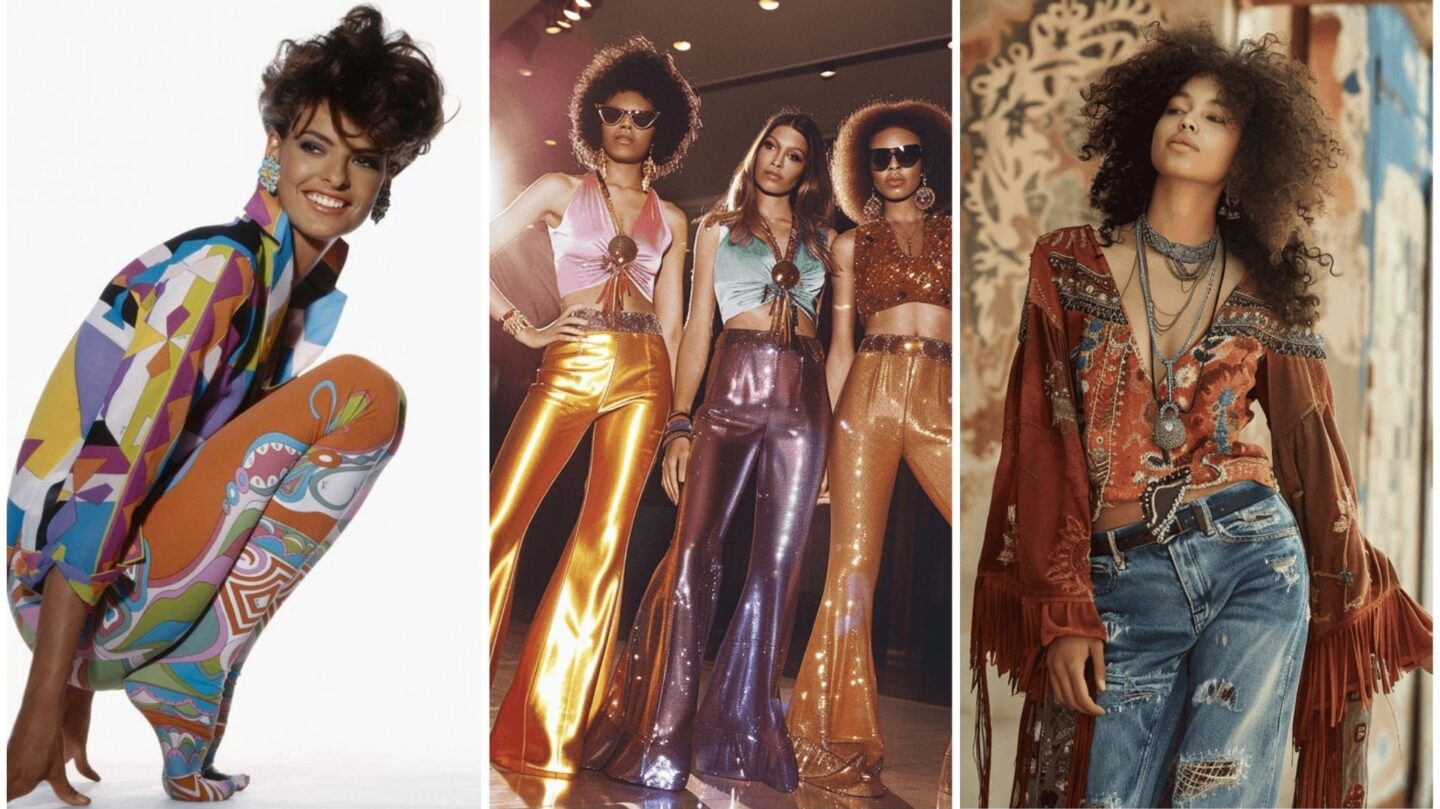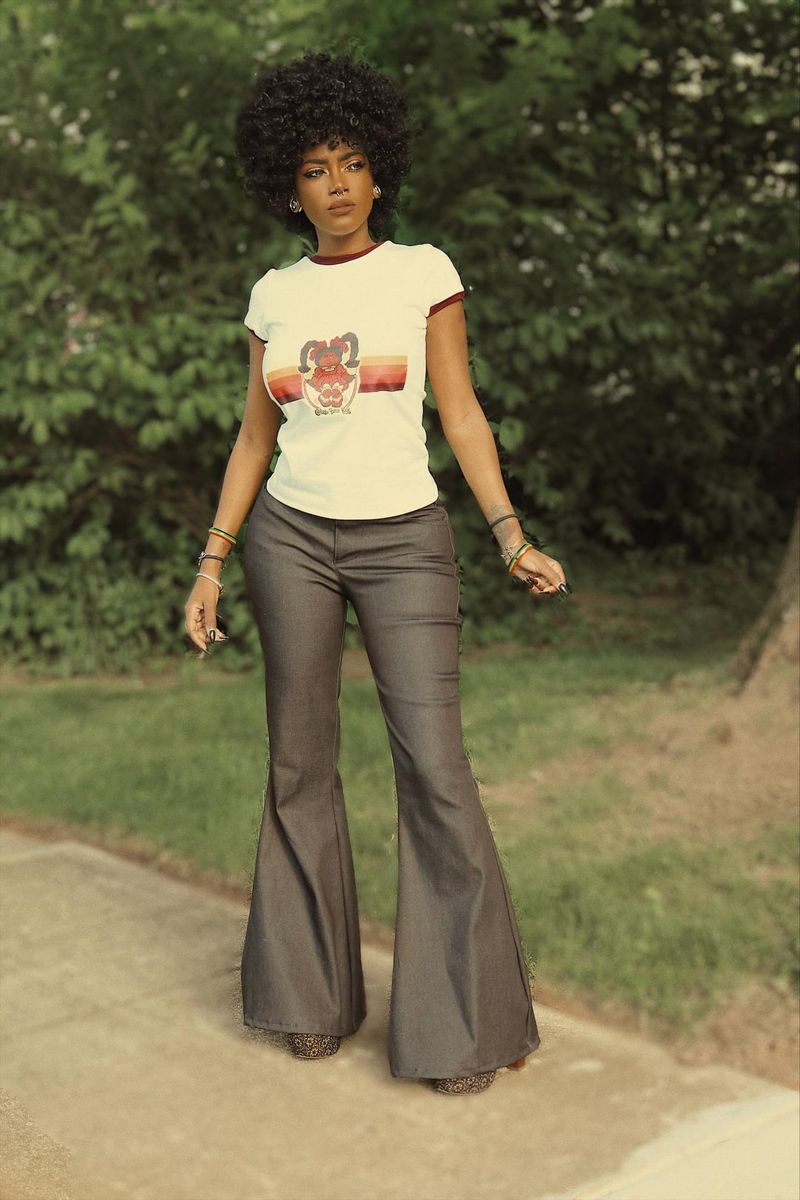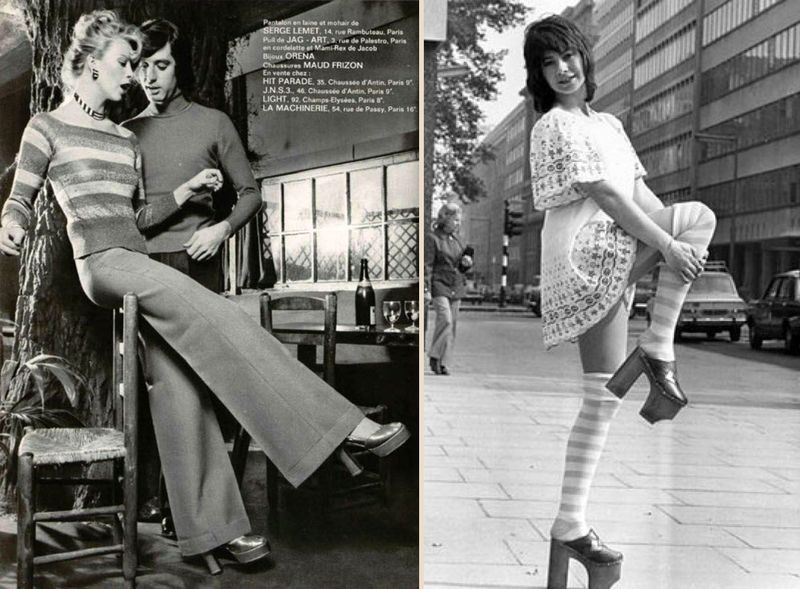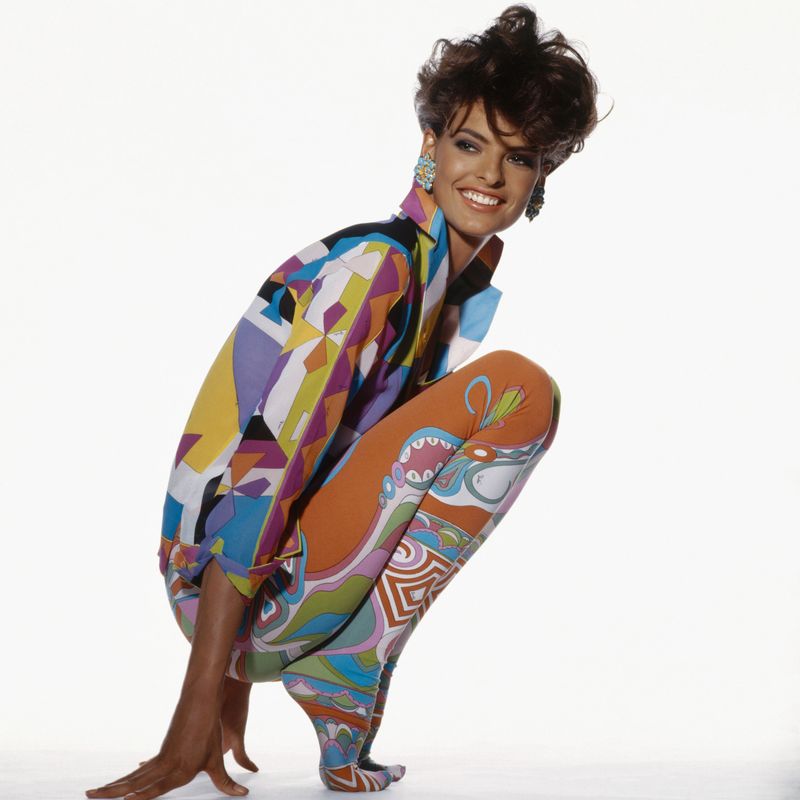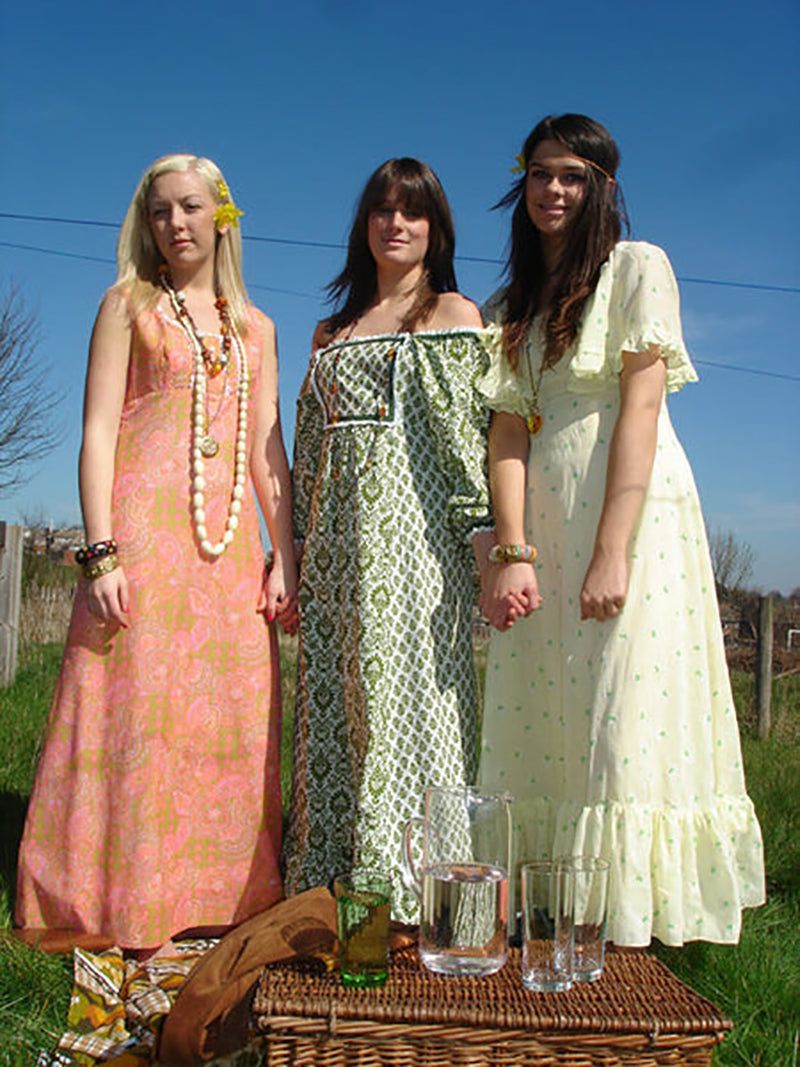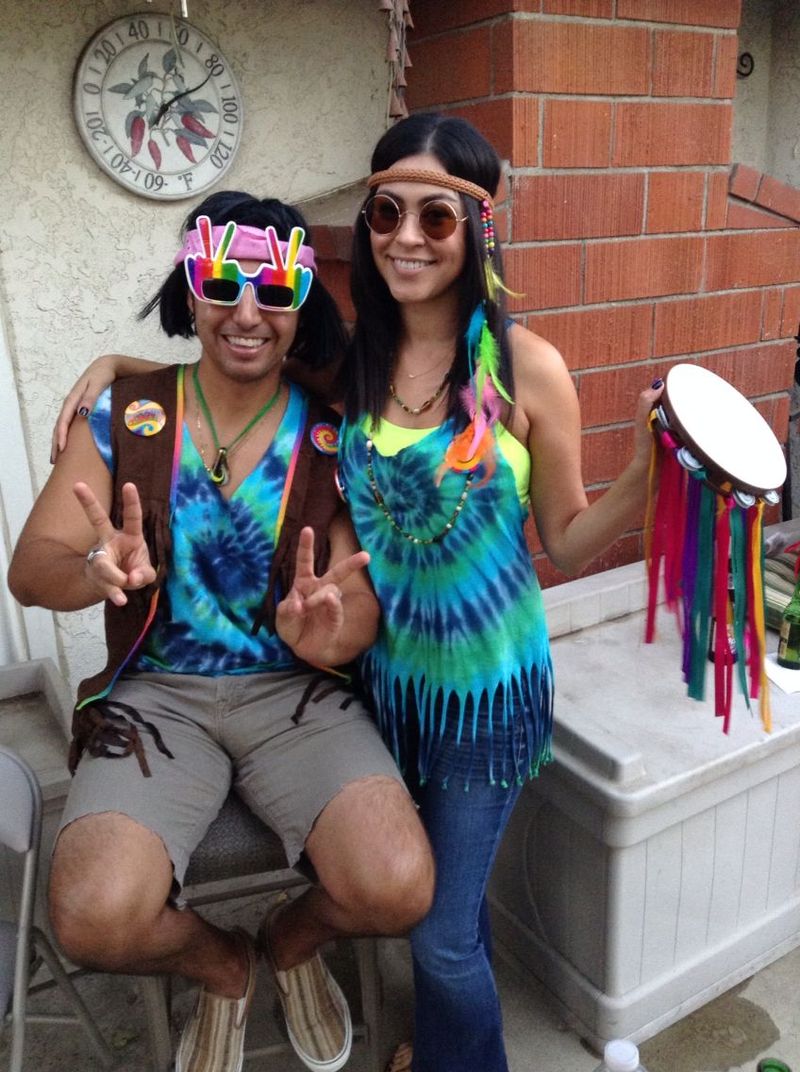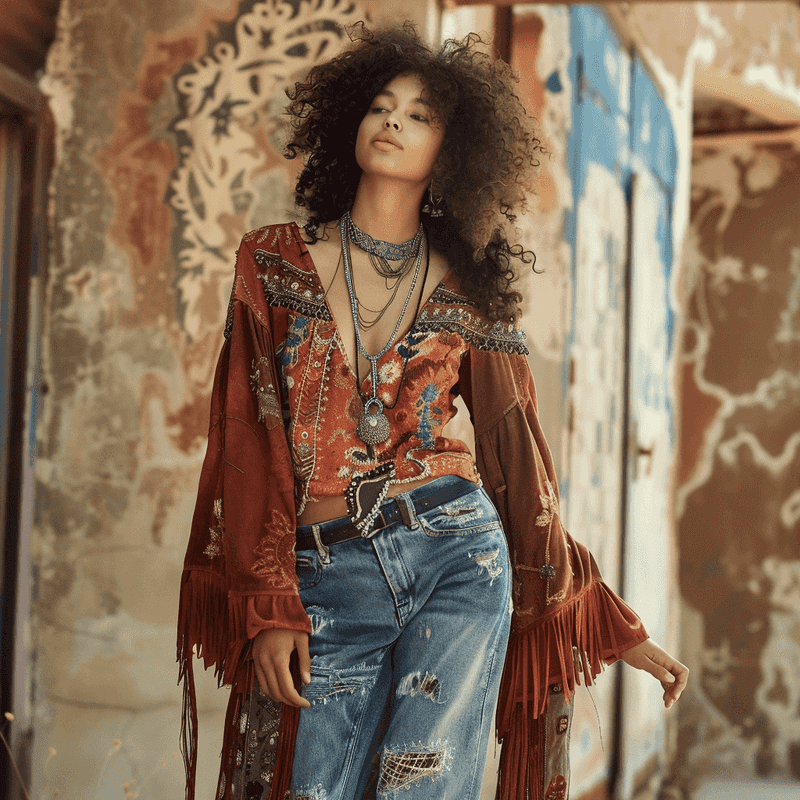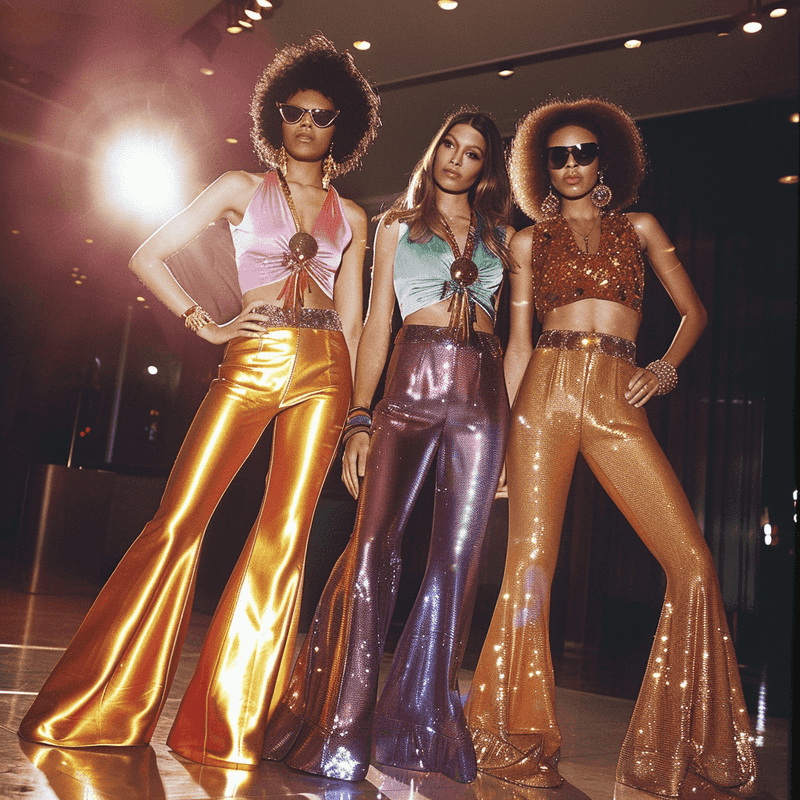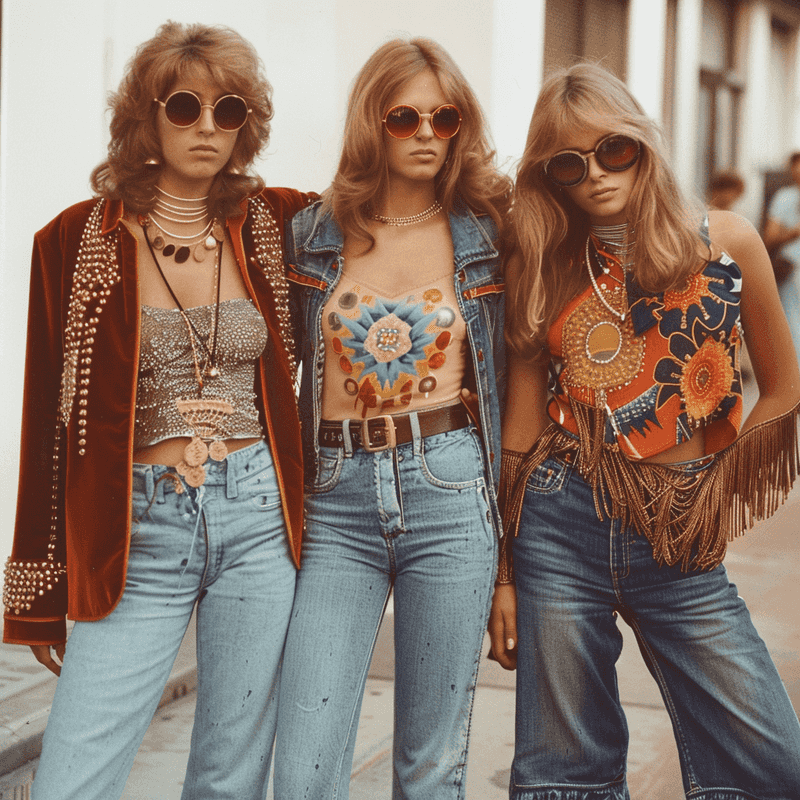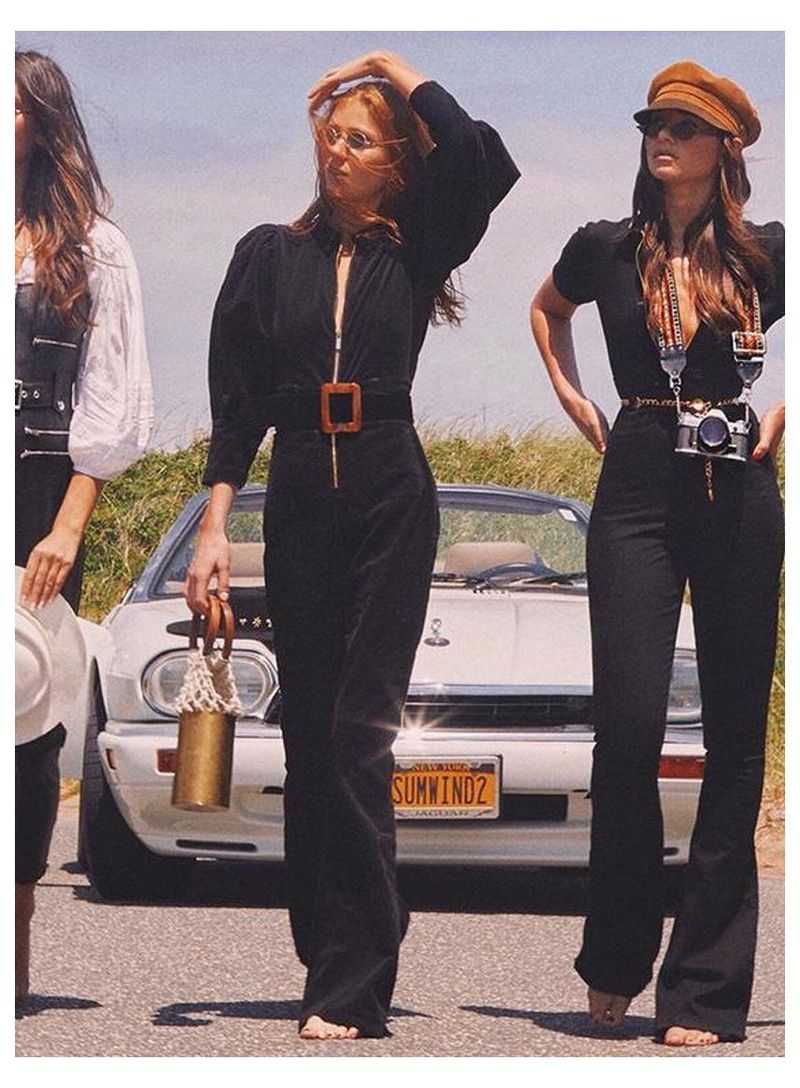The 1970s was a transformative decade in the world of fashion, characterized by bold expressions, vibrant colors, and a break from traditional norms. This era, marked by its unique approach to style, continues to influence fashion trends even today. Let’s dive into nine standout reasons why the fashion rules of the 70s were truly one-of-a-kind.
Bell-Bottom Pants
Bell-bottom pants were a defining fashion trend of the 70s, celebrated for their dramatic flared legs. These pants became synonymous with freedom and self-expression.
Typically made from denim, the style’s popularity soared partly due to its association with the hippie movement, which emphasized peace and individuality.
Whether paired with platform shoes or sandals, bell-bottoms were versatile and could be styled in numerous ways. The comfort and fluidity they provided contributed to their widespread acceptance and enduring appeal.
Platform Shoes
Platform shoes epitomized the bold fashion statements of the 70s. Known for their towering soles and eclectic designs, they added height and drama to any outfit.
These shoes were worn by both men and women, breaking gender norms and adding a playful element to fashion.
Whether covered in glitter or leather, platform shoes were more than just footwear; they were a declaration of individuality and daring style.
Psychedelic Prints
Psychedelic prints exploded onto the fashion scene in the 70s, characterized by swirling colors and abstract patterns. This trend was heavily influenced by the psychedelic art movement, which sought to replicate the mind-altering experiences of hallucinogenic drugs.
These prints captured the era’s spirit of exploration and breaking boundaries. Garments featuring psychedelic patterns were perfect for making bold, eye-catching fashion statements.
Whether on dresses, shirts, or skirts, these prints added a splash of creativity and excitement to the 70s wardrobe.
Maxi Dresses
Maxi dresses were the epitome of bohemian elegance in the 70s. These floor-length dresses offered a blend of comfort and style, allowing for freedom of movement while making a fashion statement.
Maxi dresses were available in a variety of prints and colors, reflecting the era’s preference for vibrant and eclectic designs.
Perfect for both casual outings and formal events, these dresses became a staple in many wardrobes, appealing to those seeking a relaxed yet chic look.
Tie-Dye
Tie-dye became a symbol of the 70s counterculture, embodying the spirit of individuality and creativity. This DIY fashion trend allowed individuals to personalize their clothing with colorful, swirling patterns.
Popular among the hippie movement, tie-dye was more than a fashion statement; it was a form of self-expression and rebellion against the norm.
Easy to create and endlessly customizable, tie-dye garments became a fun and artistic way to stand out and embrace the colorful ethos of the decade.
Fringe Clothing
Fringe clothing captured the free-spirited essence of the 70s. From jackets to vests, fringe added a playful and dynamic element to outfits.
The movement of fringe as one walked was both eye-catching and emblematic of the carefree vibe of the era.
Often associated with the bohemian style, fringe garments were perfect for festivals and casual gatherings, adding a touch of flair and texture to any ensemble.
Disco Fashion
Disco fashion brought glamour and shine to the 70s, characterized by vibrant colors, sequins, and metallic fabrics. This trend was largely inspired by the disco music scene and its lively party atmosphere.
Outfits were designed to catch the light and dazzle onlookers, making them perfect for nightlife and dance floors.
Disco fashion encouraged self-expression and confidence, allowing individuals to sparkle and stand out in a crowd, embodying the exuberance of the era.
Earth Tones
Earth tones were a key component of 70s fashion, reflecting the decade’s connection to nature and the environmental movement. Shades like browns, greens, and rusts were prevalent, offering a grounded and organic aesthetic.
These colors were versatile, easily paired with other hues and trends of the era.
Earth-toned clothing appealed to those who wanted to channel a more natural and understated look, balancing the louder trends with a sense of calm and authenticity.
Jumpsuits
Jumpsuits were a revolutionary addition to 70s fashion, combining practicality and style. This one-piece garment offered a streamlined silhouette and was available in a variety of designs and fabrics.
Jumpsuits were favored for their ease and the bold statement they made, suitable for both casual and formal occasions.
They embodied the era’s embrace of innovation and change, offering a chic alternative to traditional separates, and became a must-have for the fashion-forward individuals of the time.
